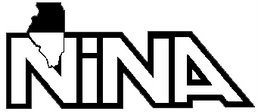Wednesday, January 30, 2008
Bridge inspections
Elections and new media
The Northwest Herald has videotaped its endorsement interviews in several high-profile contests, and posted them online. Here's an example.
The Rockford Register Star's election site includes a searchable database of campaign contributions. Users can search by candidate, ZIP code or name of donor.
The Beacon News in Aurora partnered with CBS-2 for debates of 14th District congressional candidates. CBS on-air anchors moderated the debates. The Beacon News did streaming video of the debates and live-blogged during them. Then they did a three-editor panel analysis ("who won," etc.) right after the debates, which corresponded with the print analysis. They had videotaped their in-house endorsement interviews, then divided the videotape into little video snippets of each candidate on each topic -- again corresponding to charts in print.
For a Kaneland school referendum, the Beacon News took people into the schools to show thecrowding, via video by Heather Eidson -- but also interviewed people who represent the "no" side of the issue.
"Just amazing stuff," says editor and publisher Rick Nagel. "The thing I like best is how well we're using print to tease to more online, and online to tease to print."
Here's the link. From the homepage, click "video" under "Web Only."
Monday, January 28, 2008
Crash
A crash like this makes you realize how dependent we've become on technology for every part of the news business. A "little" thing like a server crash or a power failure can threaten to paralyze a newspaper. Yet, with a little creative thinking, we can turn to other technology that enables the paper to get out, with the final result being almost transparent to readers. Our Web site is still toast, but the paper went out on time.
All of which makes me wonder if print news will ever totally go away. When technology is unavailable, paper still wins. And the technology we rely on can be a lot more fragile than we like to think. When Hurricane Katrina devastated the Gulf Coast, print newspapers became an information lifeline for those communities. If a larger catastrophe ever were to take out electricity for a region, ink on paper would win the day (provided a print plant somewhere had power and delivery trucks).
I had a student reporter ask me this morning if she should go home because the Internet didn't work. As the Internet generation increasingly populates newsrooms, a little technology catastrophe now and then can be a good lesson. Newspapers were here hundreds of years before the Internet. Somehow, Ben Franklin and Joe Pulitzer and Woodward and Bernstein did OK, even without Google and Facebook.
Thursday, January 24, 2008
How many scientists?
This comes from a report issued by the American Geophysical Union, which has a membership of 50,000. This number, it turns out, includes student members. The number of scientists isn't clear. The group’s position statement comes from its governing council, which has 28 members. A majority vote – 15 – is needed for position statements.
So which is it? 50,000 scientists, or 15? Obviously somewhere between. I just think a story like this points to how journalists need to go beyond press releases and think critically about the stats they are being fed -- especially on such a politically charged issue. Even a quick check of the AGU Web site would have let reporters clarify that 50,000 figure.
Wednesday, January 23, 2008
NIU forum: New media
The Northern Star Alumni group is hosting a panel discussion on Saturday, Feb. 23 here at NIU-DeKalb. Topic: new media, old media, who will survive and how. NINA people are invited!
Featured guests include:
- Famed political blogger Markos Moulitsas, founder of the Daily Kos;
- Diane Mermigas, who writes about technological trends for the Hollywood Reporter;
- Kurt Gessler, assistant managing editor/online at the Daily Herald in Arlington Heights;
- and Mitchell Locin, senior editor, electronic news, Chicago Tribune.
The focus will fall on how traditional news and entertainment outlets are being pressured by what some call “democratizing digital media” such as blogs, Web sites and delivery of information any time, anywhere. Questions to be explored include: “As business models evolve, how will the mainstream media mesh the old and new effectively enough to stay solvent and compete?”
The program starts at 4 p.m.. It's free and open to the public and the media, as well as NIU students and faculty. The alumni dinner follows at 6:30, and costs $30. Anyone may register for either event, or both.
Full information and a registration form are available at http://www.northernstar.info/alumni/. Note the Feb. 11 registration deadline. To register, contact Maria Krull at 815-753-0707, or mkrull@niu.edu.
Free book download
Niche magazines
Monday, January 7, 2008
Mojo kits and costs
Basically, how do we take this step without breaking the budget?

